Good Morning Friends!
Today we have Good News!
(for a change…!?, but Why?)
Because this is our last Newsletter from Arugam Bay Emsam sale !
Why? Who is giving up?
Nobody!
It’s because you now have you very own, daily, Newsletter from AbaY
It is:
www.arugam.info
Local news, as well as reviews, are already published on our new look, interactive home page.
Anyone can now add photos, comments, questions!
Please take a look and help to develop Greg’s brain child by participating. Just a little bit!
Contents are already changing EVERY day on our new style web pages, simply click link above and take a quick preview.
Feedback required
Folks, remember we are just simple guys trying to help ourselves and promote our area.
Your comments, suggestions, ideas are most welcome and very valuable to us.
Please tell us what you like to see, what you want, what you would like us to include.
What has happened since June 2006?
As this might be our final, direct message to you we take this opportunity to report on some results and developments since we contacted you with our June Newsletter. And we can tie up some old ends in that way.
Season:
The 2006 Surfing Season went actually much better than feared. Given the situation in the rest of the island we have done quite well.
We had a good crowd in town, great surf conditions and a very peaceful time here at Arugam Bay.
Sadly it was a very much shorter season; strange it seems to be over so early.
Because the swell is actually best right now….at the end September.
All NGO’s, our last year’s only customers, have largely gone home as well. Just as well. No great loss for us or the Bay. See “Attitudes 2006” below.
N.s.s. Simon
Due to his local popularity Simon’s present predicament was at once known and was already widely discussed even before any publication, anywhere. We are still observing an unexpected, international interest judging by the flood of emails on this very subject.
Relax. Everything possible is being done.
Sadly this is uncoordinated as usual; because many guys trying to help, but they don’t know of each other’s efforts …..
SVH Holiday Homes Idea:
There has been some interest in our offer to construct a few dream homes/offices/studios by the sea, but no firm takers so far.
Understandable, with the ongoing civil unrest not many wish to invest in Sri Lanka at this point in time.
However, we are convinced that once peace is settled, any early investment into property will prove to be a very wise one.
Rich Middle Eastern Property Speculators already keenly monitor our area; read the link below.
Please form your own opinion what top guns in the Arab Emirates think of Eastern Sri Lanka:
http://www.forumromanum.de/member/forum/forum.php?action=ubb_tindex&USER=user_338742&threadid=1136005235
Actually time is near perfect right now to make a real bargain.
Whilst prices are equally as depressed as potential vendors ….
New, for the SVH is the fact that we now work on a new design study by a disciple and former student of Sri Lanka’s greatest ever Architect, Geoffrey Bawa. The entire concept also benefits from my own, highly advanced civil engineering techniques.
As a result the new Siam View will not only be beautiful, right on the Eastern Sea but of course it will be 100% Earthquake, Tsu/Flood and Typhoon resistant.
Please drop us a line or call my number if you are interested in further details.
My personal phone number is mentioned right below together with a summary and link to background info about Bawa’s great visions, in case you haven’t heard of this great visionary as yet.
SVH’s unique location:
We are aware, but only now, that we are sitting on a beautiful, still very rough diamond.
Only experts will be allowed to cut and improve it in future.
There is NO doubt the SVH will go far one day. We just have to take our time. And chose our partners carefully.
And we must prevent to fall into the common trap of cluttering our beautiful beachfront with dangerous sheds and silly cabanas like everyone else has to do, just to earn a quick buck.
But the locals are here to earn money, many try to get rich. We were rich and are only here to live and retire.
Income and money only concerns us when we can’t afford to pay local staff or bills.
Right now we possess everything else, including a brilliant reputation and the best position near surf point, all with a good view and a vision.
We even have potential guests and good bookings; if had the rooms….they would be full.
All we need is just a bit of financial help, that’s all.
And a dream will come true. Not just for us, but our friends as well.
“Enjoy” NGO’s
Good News! At last we have succumbed, we have actually given up and hope that we will not mention them anymore
Our daily observations simply are too depressing. Let us not spoil what is left of a fine day.
World Cup Coverage and our June Projector appeal
Thanks Folks! We really had a great time.
With our BIG screen, open air cinema setting overlooking the open sea and perfect surround sound from our huge Party systems it was almost like being back there in Germany.
Our June appeal for help resulted in just one single contribution of 65$ from Aussie Dan, but we still managed to find an old projector and the rest of the cash from our own resources.
Even the Italian NGO’s loved it; see yourself on the link right below.
We have created a popular Gallery specially for you:
http://picasaweb.google.com/arugamsurf/WorldcupCoverageLiveAtArugamBay
Photo Album:
The entire, new photo gallery has been so popular that we decided to incorporate the whole concept into our new home Page
www.arugam.info
In addition we hope, with Markus’s super expert’s help will soon offer online ratings and voting facilities.
To make it more democratic than ever.
Best Surf Photo/ Most romantic Photo competition
To stimulate even more interest, to show the nice side of Sri Lanka life and promote the peaceful nature of Arugam Bay we decided to offer a price in each selected category. Maybe YOU can win a free holiday in the Bay for two?
We promise to take care and publish YOUR photo! The best shot -with online voting- is the winner! If it is sent to:
ArugamFoto@Gmail.com
Security considerations
Sri Lanka has slipped back into the dark ages.
Outrageous murders of many innocent have taken place, Again
Only in the last few days there are signs that common sense will surface
Sides seem to agree on cordial meetings, in Oslo. Again
Lucky for the Bay, we have been spared and it is still very safe and peaceful here.
Maybe it is even better and more secure than Colombo, London or any other place these days?
Arugam Bay and all its approach roads are perfectly safe!
Loans
Sadly nothing has changed this year as yet.
As mentioned our total (non-self earned-) income since 2005 still comes to about 10,000 Euro .
Most of this are kind loans, only some of it represents a grant to us.
It came from true friends who (still?) trust us. Nothing at all was ever given to us or the Hotel Association from any official source, like Governments, Companies or Organizations.
We are very sad that we still owe loan cash to two of you, and much longer than hoped and agreed.
Unless a proper finance can be arranged, or we see good upturn of income we simply don’t know how we can cope with the present, serious cash flow situation.
As we don’t even earn enough to pay all our staff; what can we do?
The long term future however is still very bright!
Our advice: Buy shares in Siam View Projects (Pvt.) Ltd., back a winning horse and you will part of a great future
(Sorry, this is just another new idea we are working on – if all fails)
Guide Books
We are honoured to have received many very positive entries in new editions of many travel books.
The best on the market at present seems to be the German Loose ” FA?hrer !”
Sorry for this, folks, I believe it is just a Deutsches Wort for “Leader” – but most of you will known this anyhow.
Some relevant author’s comment, in German though, have been scanned and can be inspected below:
http://picasaweb.google.com/arugamsurf/TravelGuideGermanLooseFuehrer
Cash & Business
The SVH Company Inc. & Co this year actually reached record turnover figures.
Each day, Millions pass through our hands.
Sadly all of it just is handled by us in trust representing many huge transactions on behalf of others
The main volume of transaction originates from the Oil rich Arab States destined for this poor Muslim area….
Throughout this year many wonder why the SVH the only place within a 2- 3 hour drive is which:
Provides cash advances for all Credit cards
Pays out all local Western Union money transfers
Pays out PayPal transactions
Transfers money globally as instructed, with low or even NO charges
Our bank should be impressed. But they don’t assist at all. Rather the opposite.
Fact is that the sad case of Bank of Ceylon rent arrears since Tsu day will now go to Court.
SVH Fred fighting another Goliath …..
The SVH: Suitable for the Disabled and Blind
What happened to the blind man?
We still think he is brilliant & gifted, and he is still welcome
But so far he has not been able to join us.
Any new construction at the SVH, however, is undertaken with disabled people in mind in any event
One never knows when it is needed and by whom.
Attitudes 2006
A nice Swiss family rewarded us with kind words for working honest & hard.
On departure, they actually paid us double the due amount!
Something like this has happened 3 times already this year already; things are looking up!
Some see it as a direct support for guys who don’t want to rely on donations or organisations.
Great! But:
An Italian NGO woman refuses to pay our staff 40Rs./ for one forgotten soft drink she consumed.
The whole issue ended just short of a fist fight ….. you can see how very serious this case was for her….
As a result, and her interaction with our Thai manageress the dear Senorita might not return in a hurry, so Somlak says
After her release from Base Hospital…;-)
If I had not interviewed her colleagues would no doubt still be hanging around waiting for the 10Rs./ change we simply didn’t have in the till…..
I admit, sometimes Somlak often plays a game with such tight guys and lets them wait until the boy returns from the shop, Bank or even from Colombia, Colombo or where ever with a huge stack of change for which a EURO equivalent simply does not even exist and the average German toilet cleaner would reject: And you know what? They actually hang around until they get their last Loopee! Four hours if need be.
If I ever see this show it I am very happy give them my last 100Rs./ note: We are not that poor and we will have to keep a ‘good’ customer happy; specially the humanitarian helpers to this Nation!
They obviously have a complex about spending too much cash on location.
Or being accused of wasting money by some sarcastic clown like me.
Friends
Maybe it’s us, the so called ‘non believers’ – maybe it’s just them, the ‘others’ with hats on?
Due to huge, suddenly surfaced lifestyle differences, locally common two faced attitudes and real bad experiences of selfish behaviour we do not consider some locals as our close friends anymore.
We are happy to report, however, that during 2006 a much better understanding and mutual respect has developed between all but one of the Expats in town and also between most other modern thinking residents.
It is a sheer pleasure to have a dialogue with people who can actually tolerate each other’ opinion…
But even our German Holy Father had to be careful these days; it’s far too easy to upset intolerant guys these days
Believe it of Not!
Cheers & continue to E.N.J.O.Y. your life!
Just as everybody else, here on holiday, here seems to do!
SVH Team
& AbHa
Arugam Bay
Eastern Sri Lanka
0094 – 773 200 201
Ps.: Prolific Geoffrey BAWA (1919 – 2003) believed to let NATURE into each home he designed.
Modern developments seem to exclude nature with multiple walls, doors and windows
Part of the new SVH concept is:
From every new room,
From every bed if you wish
The first thing you will see when you open your eyes each morning will be:
The deep, blue, tropical sea right in front of you.
Dotted with hunky surfers, and hopefully also decorated with the odd bikini girl.
Could this not be a brilliant beginning for a days work or play?
http://en.wikipedia.org/wiki/Geoffrey_Bawa
To finish this letter we have just only one single request:
Once a month, please take at least one quick look at
www.arugam.info
—
Have you looked at our new Home page?
Our Picasa Web Gallery is also worth a visit.
Please support us by leaving a Comment!
www.arugam.info
source:
http://www.sri-lanka-board.de/archive/index.php?t-2334.html Flagyl price ireland

![]()










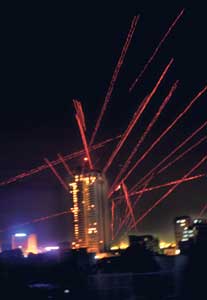
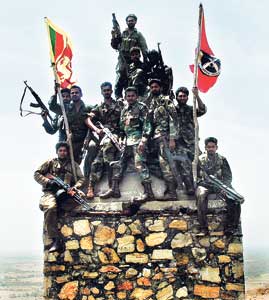

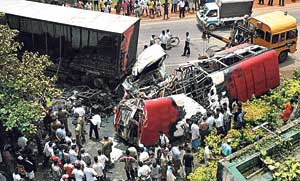
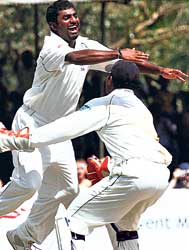
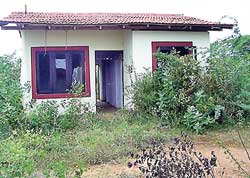
 Arugam Forum
Arugam Forum Arugam Photo Galleries on Picasa
Arugam Photo Galleries on Picasa Old Website
Old Website Press Coverage
Press Coverage Surf Forecast for Arugam Bay
Surf Forecast for Arugam Bay
TODAY’s Comments